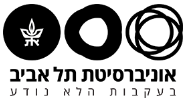קולוקוויום בחוג לגאופיזיקה: High-Resolution Archaeomagnetic Dating of Biblical Military Campaigns and Geomagnetic Field Variations
Yoav Vaknin, Bern University
Zoom: https://tau-ac-il.zoom.us/j/89059154709?pwd=u4Gphpi2sUOcLmQNlI9jPzVwblPdiX.1
Abstract:
One of archaeology’s central challenges is the accurate and precise dating of past events. Traditional methods—ceramic typology and radiocarbon dating—have limitations. Ceramic typology provides only relative dates, while radiocarbon dating, dependent on organic material, often yields age ranges too broad for precise historical interpretation. These constraints have hindered resolution of key chronological debates, such as those surrounding the Iron Age in the Levant and its relationship to biblical history.
In this seminar, I will present a high-precision dating method based on archaeomagnetism—reconstructing the direction and intensity of the Earth’s magnetic field recorded in burnt archaeological layers. Many such layers were created during historically documented military campaigns. By anchoring magnetic data from these events to secure historical dates, we have produced a robust curve tracking geomagnetic changes over time. Poorly dated materials can now be matched to this curve, yielding precise chronological insights—especially during the radiocarbon calibration plateau of the mid-first millennium BCE, where no other analytical tool offers comparable resolution.
Beyond its archaeological utility, this research offers a rare window into the behavior of the geomagnetic field. Archaeomagnetic data from archaeological contexts allow time resolutions unattainable through geological materials, capturing even short-lived geomagnetic features. One such feature is the Levantine Iron Age Anomaly (LIAA), characterized by intense and rapidly shifting magnetic fields. The present case study contributes to dating the decline of this anomaly, using historically dated military events.
The method is cumulative—each new data point strengthens the curve—and is now being extended beyond the Iron Age. Additional archaeomagnetic tools, such as those identifying burnt materials and estimating firing temperatures, further enhance site formation analyses critical for chronology and site interpretation. Together, these approaches represent a significant advancement in both archaeological dating and paleomagnetic research.
מארגן האירוע: ד"ר אריאל ללוש


